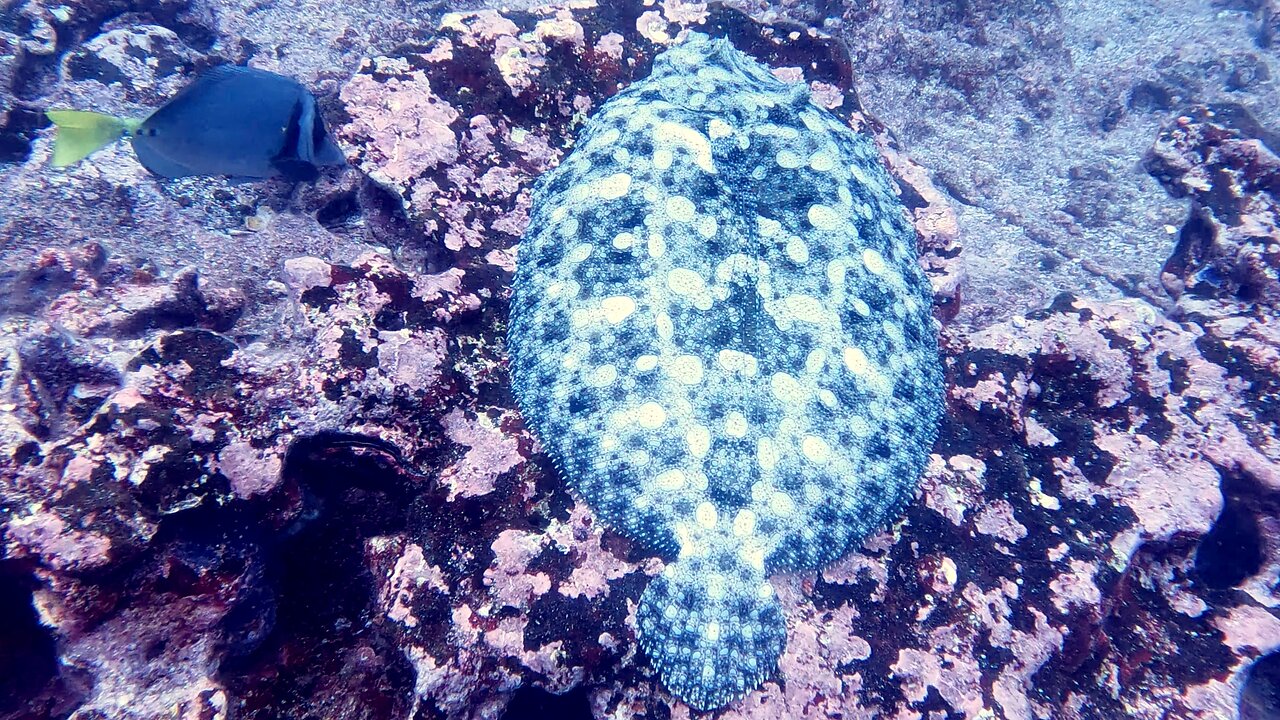Premium Only Content

Giant flounder surprisingly fails to mimic colour on lava rock in Galapagos Islands
Flounders are nature's true masters of disguise. Capable of rapidly changing the pigments in their skin to match their surroundings, they can transform their appearance in seconds. Visual cues inform the brain of the colours and patterns in their close environment and the brain signals the body to closely match these as quickly as possible. This is useful in avoiding predators, and also in ambushing prey.
The flounder is an awkward swimmer. It cannot rely on speed or agility to outrun larger fish or catch its food. It has evolved to lie on the bottom, waiting for opportunities. They begin their life swimming upright in a typical fish manner. One eye eventually migrates to the other side of the body so that it can lie on the bottom and use it's elongated eye structures like periscopes. This is an incredible adaptation that is unique to flounders.
These flounders were found in the waters of the Galapagos Islands. The large one in the final clip was found on a rock formation beside Cousin's Rock, a very remote dive site with strong current and stunning topography. The flounder had skillfully imitated the texture of the rock it was hiding on but it seemed to have struggled with colour-matching. The blue that it displayed was an obvious contrast to the pink and grey lava rock bottom.
The Galapagos Islands are unmatched in their beauty and diversity, drawing scuba divers from all over the world to see the animals that call them their home.
-
 1:45
1:45
WildCreatures
14 days ago $1.02 earnedGiant manta rays surround scuba divers in Galapagos Islands
3K2 -
 48:44
48:44
PMG
13 hours ago"Hannah Faulkner and Bishop Leon Benjamin | REVIVAL IN AMERICA"
1.7K -
 41:55
41:55
Man in America
12 hours ago🔴 LIVE: The Cabal’s Most Powerful Weapon is COLLAPSING
97.5K66 -
 LIVE
LIVE
Jerry After Dark
12 hours agoJerry After Dark: Carnival Games
3,679 watching -
 3:55:04
3:55:04
ThatStarWarsGirl
8 hours agoTSWG LIVE: Big NEWS! Plus Reacting to Woke Meltdowns!
90.9K14 -
 8:02:46
8:02:46
FusedAegisTV
9 hours ago『AST lvl 100』Tuesday Raid & Rant | Final Fantasy XIV | Patch 7.1 Day of Reckoning!
60.3K2 -
 59:17
59:17
Matt Kohrs
10 hours agoRumble's Q3 Recap & What's Next w/ CEO Chris Pavlovski
82.9K30 -
 1:43:47
1:43:47
Adam Does Movies
14 hours ago $22.81 earnedGladiator II Early Reviews + Tom Cruise Stans Glen Powell + Freddy Krueger - Movie News LIVE!
73.8K5 -
 2:24:03
2:24:03
WeAreChange
10 hours agoTrump Creates Department Of Government Efficiency With Elon And Vivek!
134K61 -
 2:10:32
2:10:32
Slightly Offensive
12 hours ago $26.93 earnedGET READY: Civil Unrests ERUPTS As Trump Resistance 2.0 EMERGES
72.1K52